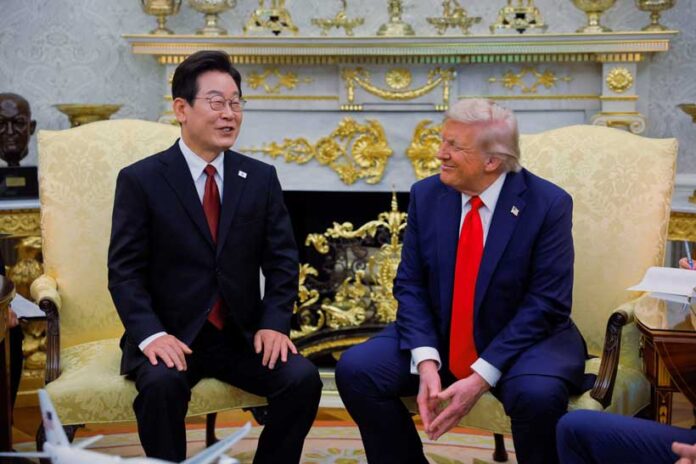The United States and South Korea on Friday detailed a sweeping trade and security agreement that follows months of tense negotiations over U.S. tariffs. The deal stems from an October meeting between Presidents Donald Trump and Lee Jae Myung, where they agreed to sharply reduce U.S. import duties on South Korean goods. For Seoul, the agreement is seen as a major diplomatic win as President Lee seeks to stabilise the economy and restore confidence after political turmoil at home.
Why It Matters
The pact restructures a key bilateral relationship at a time of global supply-chain competition. It not only lowers tariffs but also deepens cooperation in shipbuilding, AI, and nuclear technology sectors central to both countries’ strategic goals. The approval for South Korea to build nuclear-powered submarines marks a significant shift in regional security dynamics, especially regarding North Korea.
- South Korean Government: Seeks economic stability, defence upgrades, and diplomatic momentum.
- U.S. Administration: Gains industrial investment and deeper security cooperation amid global competition.
- Regional Security Actors: Particularly North Korea, which will view nuclear submarine developments closely.
- Industry Players: Semiconductor, auto, nuclear, and shipbuilding sectors stand to be most affected
Key Deal Components
$350 billion total South Korean investment in the U.S., including $150 billion for shipbuilding and $200 billion for broader industrial sectors.
Tariffs on South Korean autos and other goods cut from 25% to 15%.
U.S. approval for South Korea to build nuclear-powered submarines, with Washington assisting in securing fuel sources.
Cooperation on uranium enrichment and spent fuel reprocessing for peaceful uses.
Commitment to FX stability, with the U.S. agreeing that South Korea can stagger cash investments to avoid pressuring the won.
What’s Next
While analysts are divided on whether Seoul secured a better deal than Europe or Japan, the agreement sets the stage for long-term industrial and defence collaboration. The rollout of investments and the development of nuclear-powered submarines will shape regional dynamics in the months ahead, as both nations navigate economic pressures and security challenges.
With information from Reuters.


